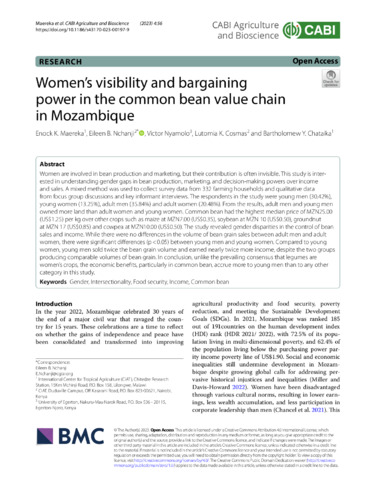Women’s visibility and bargaining power in the common bean value chain in Mozambique
Women are involved in bean production and marketing, but their contribution is often invisible. This study is interested in understanding gender gaps in bean production, marketing, and decision-making powers over income and sales. A mixed method was used to collect survey data from 332 farming households and qualitative data from focus group discussions and key informant interviews. The respondents in the study were young men (30.42%), young women (13.25%), adult men (35.84%) and adult women (20.48%). From the results, adult men and young men owned more land than adult women and young women. Common bean had the highest median price of MZN25.00 (US$1.25) per kg over other crops such as maize at MZN7.00 (US$0.35), soybean at MZN 10 (US$0.50), groundnut at MZN 17 (US$0.85) and cowpea at MZN10.00 (US$0.50). The study revealed gender disparities in the control of bean sales and income. While there were no differences in the volume of bean grain sales between adult men and adult women, there were significant differences (p < 0.05) between young men and young women. Compared to young women, young men sold twice the bean grain volume and earned nearly twice more income, despite the two groups producing comparable volumes of bean grain. In conclusion, unlike the prevailing consensus that legumes are women’s crops, the economic benefits, particularly in common bean, accrue more to young men than to any other category in this study.

